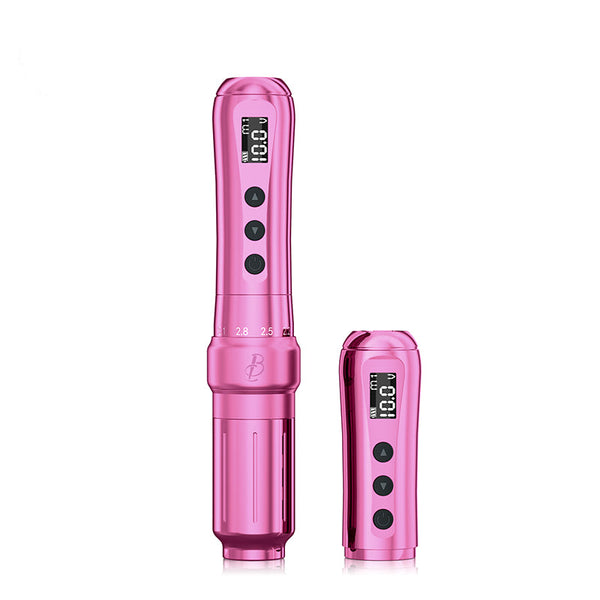In recent years, the field of cosmetic tattooing has witnessed remarkable innovations, particularly in the technology of tattooing guns. These advancements have revolutionized the way artists create permanent makeup, offering enhanced precision, comfort, and efficiency. This post delves into the latest developments in cosmetic tattooing guns, providing a comprehensive overview for enthusiasts and professionals alike.

Precision and Control: The New Standard
One of the most significant advancements in cosmetic tattooing guns is the improvement in precision and control. Modern devices are equipped with advanced needle configurations and digital controls, allowing artists to achieve finer details and more consistent results. For instance, adjustable needle depths and speeds enable customization for different skin types and areas, ensuring optimal outcomes for procedures like eyebrow microblading and lip tinting.
Enhanced Comfort for Clients
Client comfort is paramount in cosmetic tattooing, and the latest tattooing guns are designed with this in mind. Innovations such as vibration reduction technology and ergonomic designs minimize discomfort during procedures. Additionally, quieter motors reduce the anxiety often associated with the buzzing sound of traditional tattoo machines. These improvements not only enhance the client experience but also allow artists to work more efficiently and confidently.
Hygiene and Safety: A Top Priority
Hygiene and safety have always been critical in the cosmetic tattooing industry. Recent advancements in tattooing guns have introduced features that prioritize these aspects. Disposable needle cartridges and sterilizable components ensure that each procedure is conducted with the highest standards of cleanliness. Moreover, the integration of digital settings reduces the risk of cross-contamination, as artists can adjust parameters without physically touching the device.
Versatility and Adaptability
The latest cosmetic tattooing guns are designed to be versatile and adaptable, catering to a wide range of procedures. Whether it's creating delicate eyeliner, shading lips, or filling in eyebrows, these devices offer interchangeable needle modules and adjustable settings to accommodate various techniques. This versatility allows artists to expand their repertoire and provide a broader array of services to their clients.
Technological Integration
Another exciting development in the realm of cosmetic tattooing guns is the integration of technology. Some modern devices come with digital interfaces that allow for precise control over needle speed, depth, and pressure. Additionally, Bluetooth connectivity and mobile apps enable artists to save and recall settings for repeat clients, ensuring consistency and efficiency in their work. This technological integration not only streamlines the tattooing process but also enhances the overall quality of the results.
Conclusion
Exploring the latest advancements in cosmetic tattooing guns reveals a landscape of innovation and improvement. From enhanced precision and client comfort to heightened hygiene and technological integration, these developments are transforming the industry. As the field continues to evolve, both artists and clients can look forward to even more refined techniques and superior outcomes. Whether you're a seasoned professional or a curious enthusiast, staying informed about these advancements ensures that you remain at the forefront of this dynamic and ever-changing field.
By embracing these cutting-edge tools and techniques, cosmetic tattoo artists can elevate their craft, providing clients with beautiful, lasting results that enhance their natural beauty. The future of cosmetic tattooing is bright, and the latest advancements in tattooing guns are paving the way for a new era of artistry and innovation.








